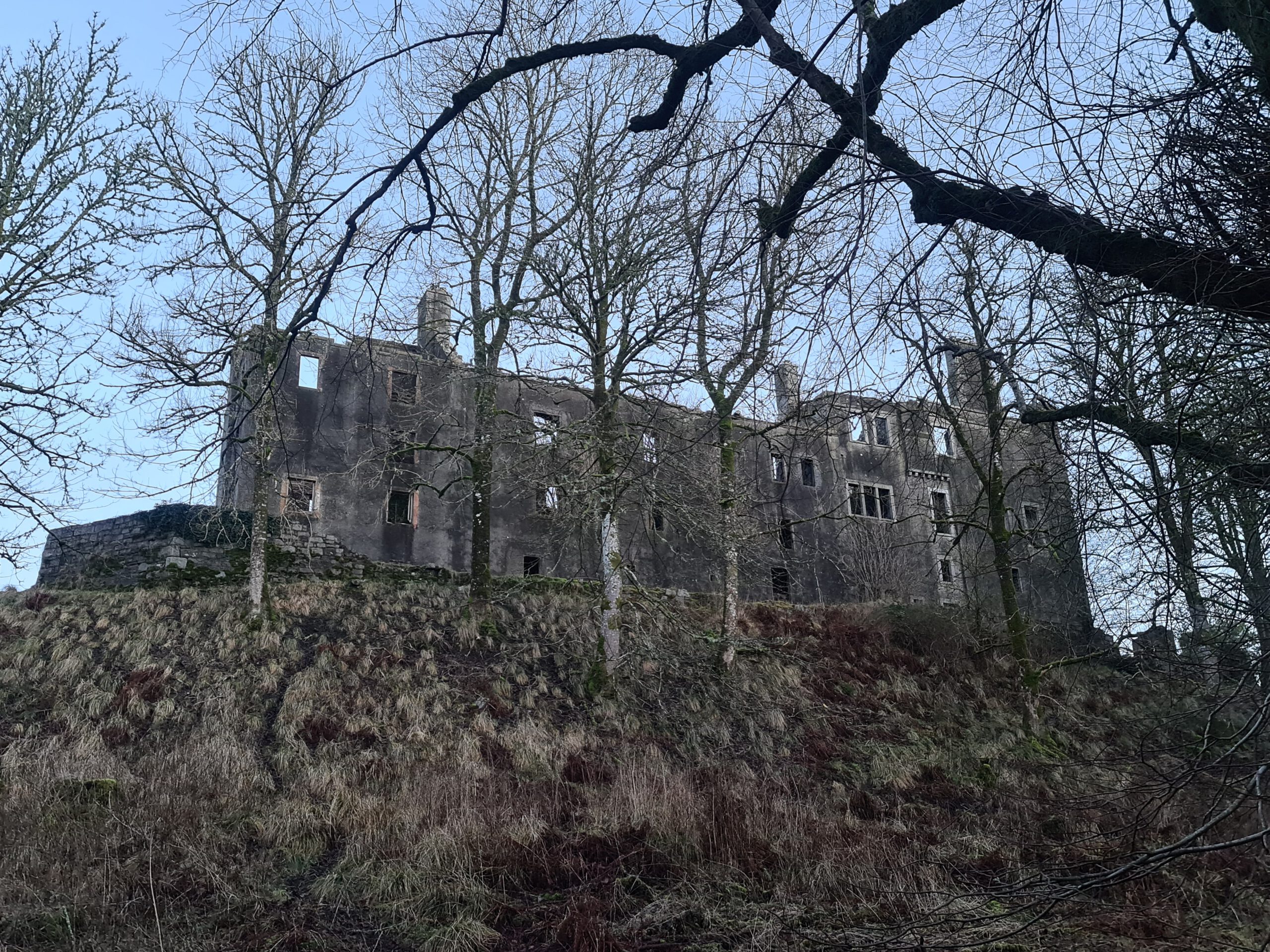Location: outside of New Galloway, Dumfries & Galloway, Scotland
kind of castle: fortified castle
today: pretty much a ruin
public transport: busses to New Galloway
scheduled monument: yes
managed by: ???
entrance fee: £ 0
opening times: 24/7
directions: Kenmure Castle – Google Maps
Situated in the south-west of Scotland Kenmure Castle is a fortified castle which these days looks more like a mansion or house than a castle. What is seen today has been rebuilt some time and the grounds were occupied from the Middle Ages onwards and the house incorporates parts of a 17th-century castle, though it has been remodelled in the 19th century. In the mid-20th century, it went derelict.

The mount on which the present castle stands is mostly natural and is thought to have been modified for defence in the early Middle Ages. The rulers of some kind of an independent kingdom, the Lords of Galloway, may have had a fortress at the very same occasion in the 13th-century, also making it a possible birthplace for John Balliol, in 1249. The same John Balliol that was to become a king of Scotland in the later years. Being the son of Dervorguilla, the daughter of the last independent Lord of Galloway, Alan, John Balliol being born there definitely makes sense. After the Lords of Galloway, the area and the castle belonged to the Douglas and Maxwell families as well as the Gordon family of Lochinver who later turned into the Viscounts of Kenmure.
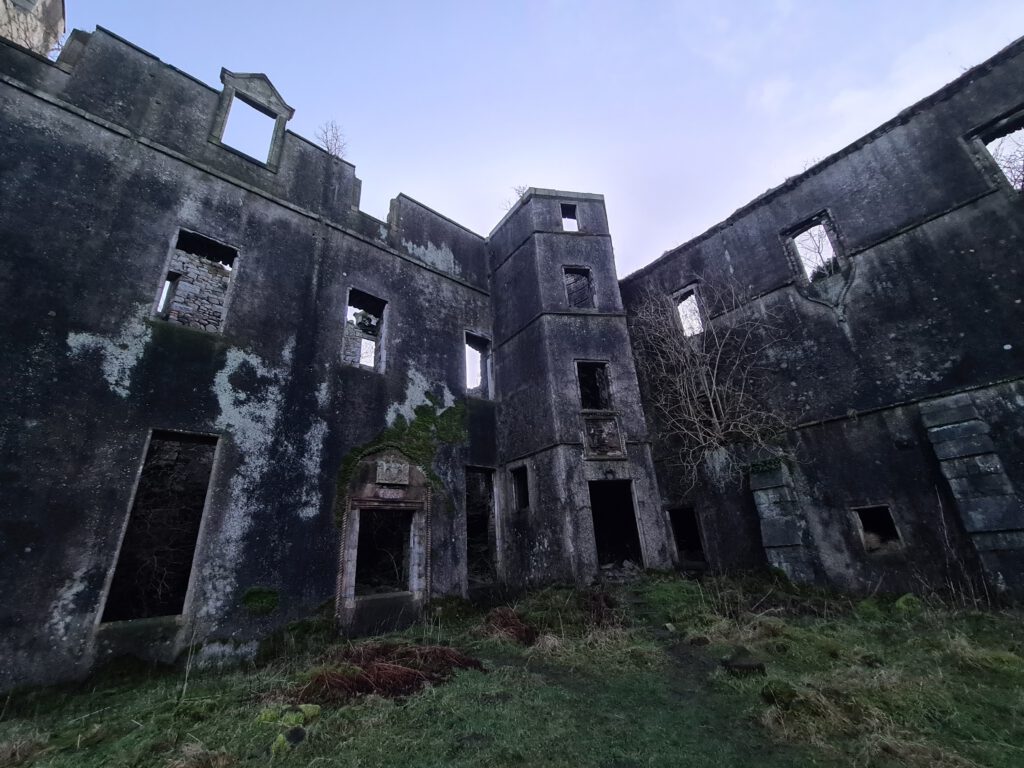
About 1297 Kenmure changed hands and was now property of the Gordon family. It was also the Gordon family who owned Kenmure Castle when King James IV passed by on his pilgrimage to Whithorn in 1508. Just sixty years later the castle was destroyed by opponents of Mary, Queen of Scots, after they defeated Mary’s supporters at the Battle of Langside.
In 1626 Sir Robert Gordon of Lochinvar was created a baronet and only seven years later his son Sir John Gordon was created Viscount of Kenmure by Charles I.
The main parts of the building date back to the 17th century but might include earlier building work. It can’t be seen these days anymore, but the former castle consisted of the castle building itself, laid out on the west and south side of the courtyard. The square being completed by a high wall on the north and east sides, an entrance gate in the north wall, which would have been flanked by two towers in the northern corners.
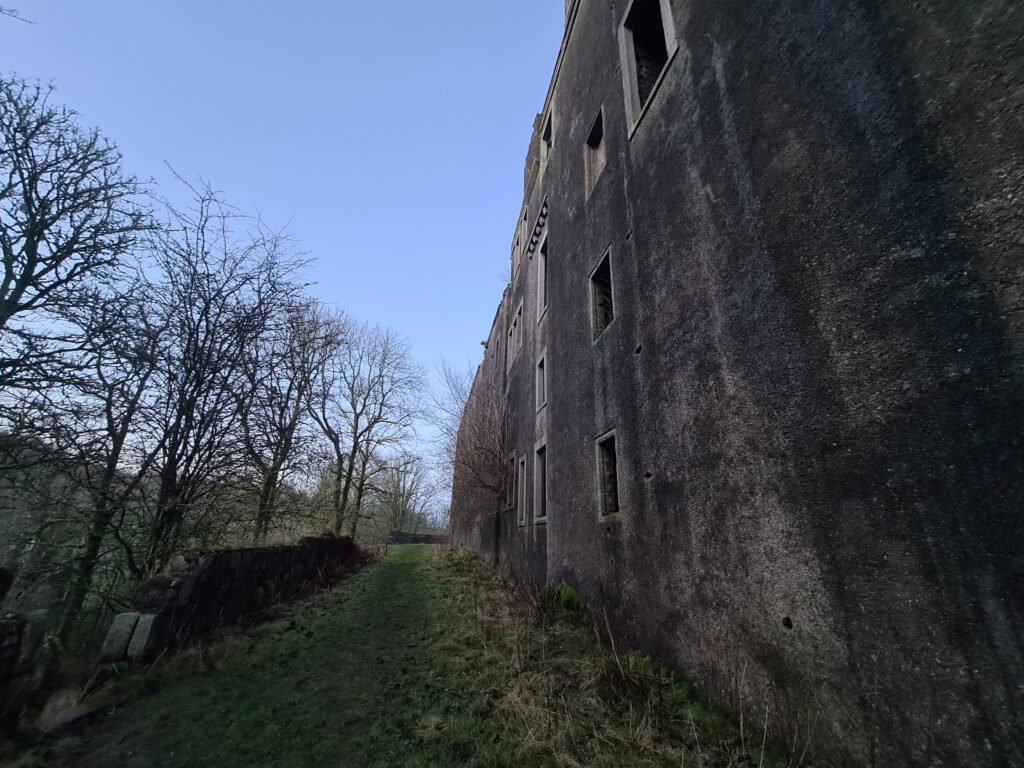
But the more or less peaceful times were over not too long after the first Viscount of Kenmure was created. In 1715 the 6th Viscount took part in the Jacobite Rising and was beheaded when it failed. Following this beheading, in 1790 Kenmure Castle was described as a ruin, not much being left to live in or call a castle after all.
It took nearly 35 years for the viscountcy to be restored to Captain John Gordon who sadly passed away just sixteen years later in 1840.

In the 1840s the south range was rebuilt and in 1879 architect Matthew Ellison Hadfield was employed to remodel the west range as well. Another thirty years later in 1908, further extensions were made by the famous Christian Elliot before the estate was sold in 1923. The castle was bought by Brigadier-General Maurice Lilburn MacEwen a battalion commander of the Stewartry Home Guard who died in 1943.
Between 1940 and 1957 the castle was operated as a hotel run by Stanley Dobson and his business partner Hugh Ormond Sparks.
But with the times the castle changed, and the hotel was closed. In 1958 the interior as well as the roof were stripped and removed. Four years later Graeme Gordon purchased the ruins.
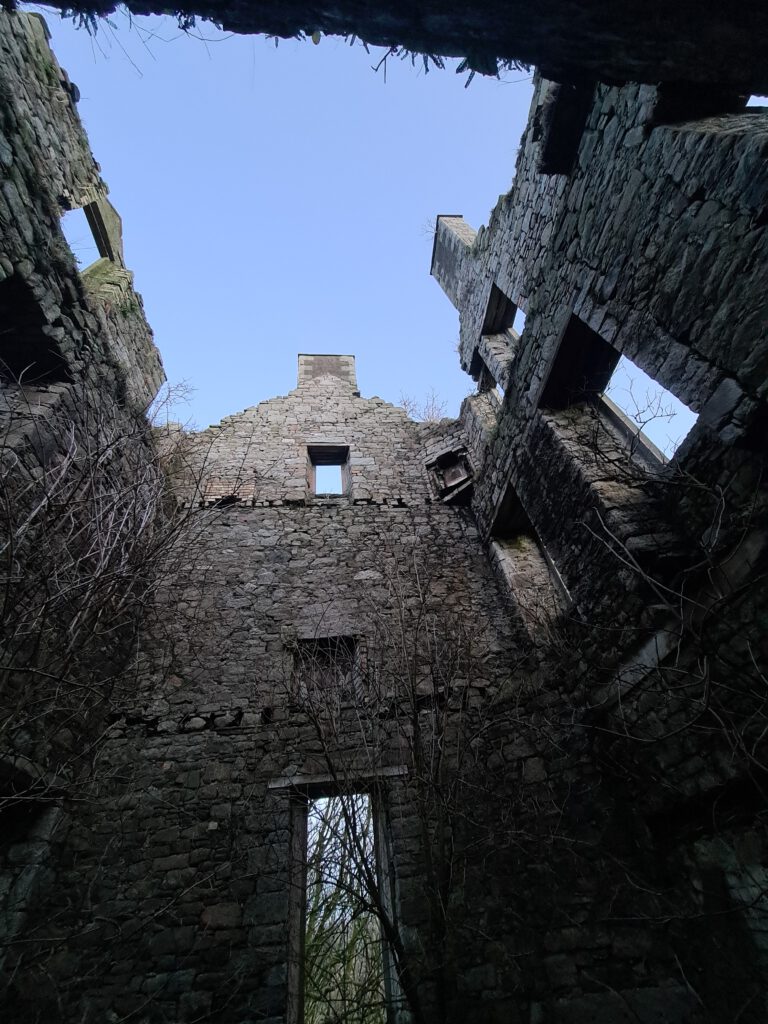
Along with people like George Gillespie, Rev Prof Samuel Rutherford, Rev Robert Nixon, John Ruskin, Cowan Dobson, Charles Tate Regan and some monarchs the famous poet Robert Burns is one of the figures who have visited Kenmure Castle during its prime.
But even such a place as Kenmure Castle, having seen Kings before they became kings and many famous people, wouldn’t be a Scottish castle if it wasn’t for the mysteries und its ghosts. So, there is no surprise in stories of a tunnel leading away from the castle. A possible escape tunnel? Or maybe an opportunity for the inmates to get in mistresses without the Lady of the Castle knowing? We will never know but it for sure is something interesting to think about.
Added to the mystery about the tunnel stories, the castle also is home to a ghost. It is said to be haunted by “The Headless Piper of Kenmure”, the ghost of a beheaded man whose body is buried at the castle. Having read a great deal of Scottish ghost stories I at times wonder what part of his life went wrong to have him still wandering about, not being able to rest in peace, when will his quest be fulfilled?!
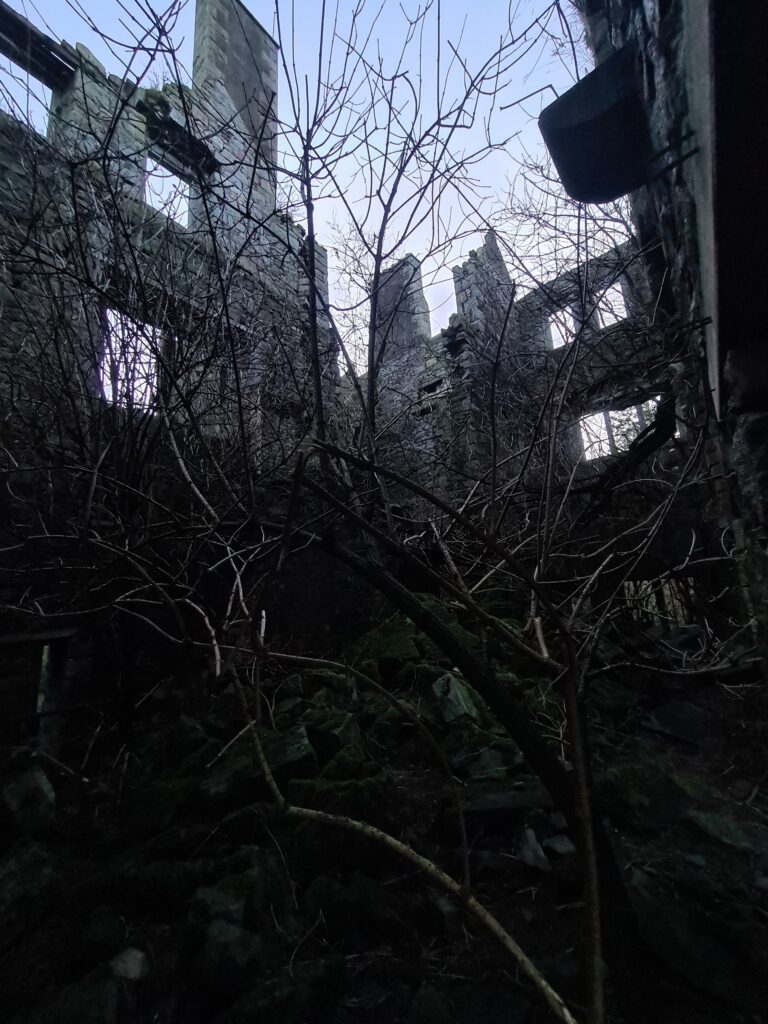
The heavily ruined castle with its crumbling structure, fallen down chunks of rocks is definitely something looking very interesting in the twilight. When I went there with a friend it was winter and the sun was going down early. While the light was very dim already it was nearly dark when we left again. At this point in time neither I nor my friend knew about the ghost living there and we were lucky enough to not hear him. However, next time I will definitely watch out for him.
ATTENTION!!!: The castle is in a heavily ruined condition; you might be able to get inside but it is very dangerous inside there are fallen down bits and pieces everywhere and the risk of new ones falling down is very high!!! I can just advise you to stay outside and enjoy the views inside through the big window frames.
